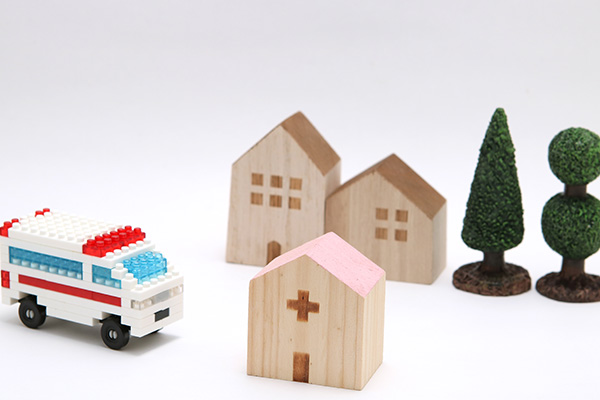Back PainCorona, CA
Back pain is a common medical problem experienced by many people in the United States. Every year, 264 million days of work are lost due to back pain. About 80% of adults will suffer from an aching back at least once during their lives, according to the National Institute of Neurological Disorders.
If you are one of the millions of Americans affected by back pain, we are here for you. At Medicross Clinic and Urgent Care, we can help find the cause of strain and create an individual treatment plan. If you are located in Corona or the surrounding area, call us at (951) 272-5900 or walk-in any time of day.

Types of Back Pain
Back pain may feel like a sudden sharp pain or a constant dull ache. Back pain often results from an accident, lifting something heavy, a medical condition or disorder, a fall, and changes that happen in the spine as a person ages. Some signs and symptoms of back pain include stabbing or shooting pain, muscle ache, and pain that radiates down the leg. Other symptoms include pain that improves with reclining and pain that worsens with lifting, bending, walking, or standing. The most frequent kinds of back pain are acute and chronic.
Acute back pain: Acute pain occurs abruptly and often lasts for a few days to a few weeks. It is categorized as "acute" if it lasts for four to six weeks before disappearing completely. Most acute back pain can be classified as mechanical. Pain related to increasing stress to vertebrae or muscles may be considered a mechanical issue. According to a study published by Current Science Inc., "Mechanical back pain accounts for 97% of cases." The pain may spread to other areas, including the thighs, buttocks, or knees. Many people who suffer from back pain also experience spasms. Mechanical back pain is more noticeable when lifting heavy objects or flexing the back.
Chronic back pain: Chronic back pain is pain that persists beyond 4 to 12 weeks. If pain lasts for this long, further medical evaluation is needed. This pain is usually related to the discs, spinal joints, or the supporting muscles of the back. Sometimes, although rarely, an infection or cancer is found.
Home treatment and self-care can help to improve back pain, usually within a couple of weeks. But if back pain does not improve during this period, a person should seek medical attention. A person should also contact a trained professional if the back pain is severe and does not improve with rest, causes numbness, weakness, or tingling in the legs, spreads down one or both legs, or is accompanied by weight loss. Seeking medical care is also recommended for people with a history of cancer or excessive drug or alcohol use.
Diagnosis and Treatment
A doctor can carry out different assessments to determine where the pain is coming from, how much a patient can move before feeling any pain, and whether a patient has muscle spasms. These assessments can help to rule out some serious causes of back pain. Acute back pain usually gets better after some weeks of home treatment. If the pain does not go away, the use of heat and over-the-counter pain relievers may be all that a person needs. If home treatments do not work after several weeks, a doctor may recommend taking specific medications or other therapies.
Start Feeling Better – Visit Us Today
By visiting us as soon as possible, our team can help get you the professional treatment you need. Instead of waiting around and allowing the symptoms to get worse, we can provide you with stronger medication and treatment options instead of ineffective store-bought products.
Three Common Causes of Back Pain
1. Strained muscles or ligaments
Most people will experience strained ligaments or muscles in their backs at some point. Sudden awkward movements or heavy lifting cause this injury. Some people strain or sprain a ligament due to trauma from an injury. Also, excess weight can put undue strain on the back and cause muscle or ligament problems. A study published in the Journal of Physical Therapy Science found that low back problems, which are often related to muscle injury, had a direct correlation to increases in body mass, even when accounting for multiple variables.
Symptoms include pain and stiffness that often worsens when stretching or bending. The pain can radiate to the legs or buttocks and is sometimes accompanied by spasms. For some people, ice and heat reduce the symptoms. Others need a doctor's care. The doctor might prescribe muscle relaxers to reduce the pain. Also, the doctor can provide information to help the patient prevent injuring the back again.
2. Herniated discs
Spinal discs sit between the vertebra and function as shock absorbers. Discs absorb force and allow people to maintain flexibility without pain. These discs must stay in position to protect the vertebra. When a disc moves out of place, the patient is diagnosed with a herniated disc.
Trauma or injuries to the spine can cause herniated discs. Repetitive movements, improper lifting techniques, obesity, and genetics also contribute to herniated discs. Regardless of the cause of the herniated disc, the condition can be quite painful. If the herniated disc is located in the upper back, the back will hurt. However, if the disc is located elsewhere, the pain might present in the shoulders, arms, or buttocks. Weakness and numbness are also symptoms.
Some people go directly to a hospital emergency room if they have a herniated disc. However, many patients have discovered it is easier to begin treatment at an Urgent Care facility. Wherever a patient chooses to be seen, the provider can run tests to diagnose the pain, provide a short-term treatment plan, and refer the patient to another provider who works with patients with herniated discs.
3. Sciatica
The sciatic nerve runs from the lower back to the legs. Sciatica occurs when the nerve is compressed. The compression could be caused by a narrowing of the spine, a bone spur, or a herniated disc. The compressed nerve causes pain that starts at the lower back and moves through the buttocks to the back of the leg. Some people only experience mild aching and burning, while others suffer from excruciating pain.
Self-care measures such as exercise, over-the-counter pain relievers, and lying on the pain-free side can help with symptoms. However, if the patient is still in pain after a week, a trip to the doctor is in order. An urgent care clinic can run diagnostic tests to determine the cause of the condition. Treatments are also available.
Check out what others are saying about our urgent care services on Yelp: Back Pain Corona
Questions Answered on This Page
Q. How do I know if my back pain is severe?
Q. Will the doctor prescribe me something for back pain?
People Also Ask
Q. What are the possible treatment options for an auto accident injury?
Q. When should I go to the doctor because of neck pain?
Q. What are the benefits of professional treatment for rashes and burns?
Do Not Suffer from Back Pain
When your back is hurting, engaging in normal activities can seem taxing. Even sleeping is hard when your back hurts. If you are experiencing back pain and even after home treatment and self-care, the pain has not gone away, seek medical care. You can be tested and treated for back pain at urgent care facilities with no appointment. These facilities are recommended for fast and convenient care.
Back to top of Back Pain




